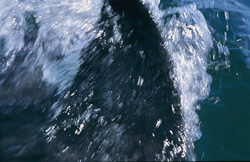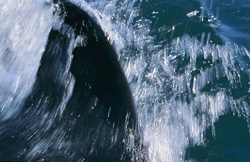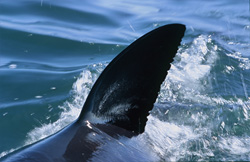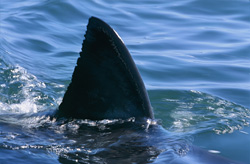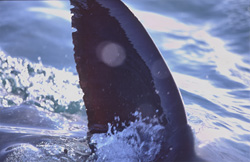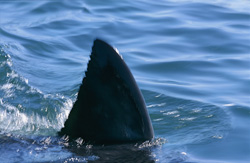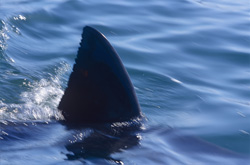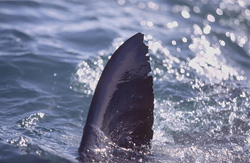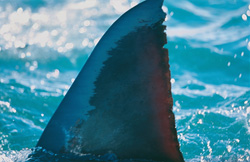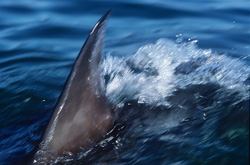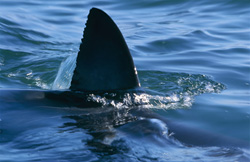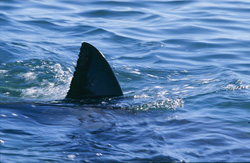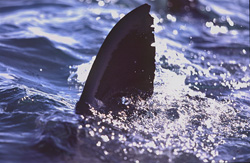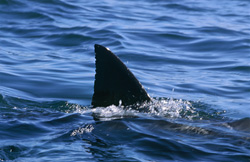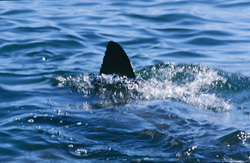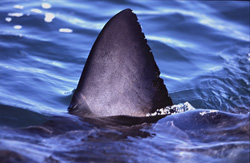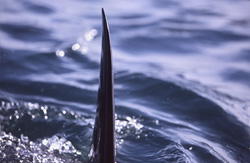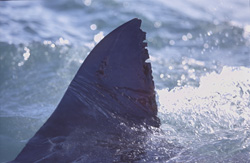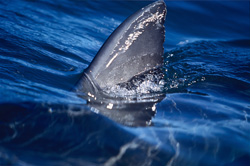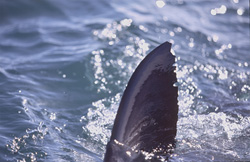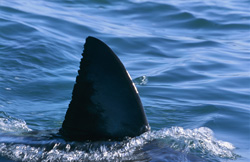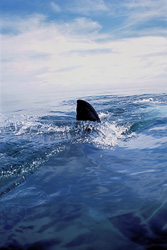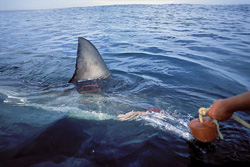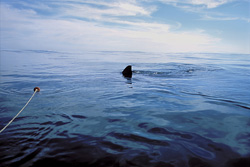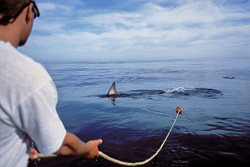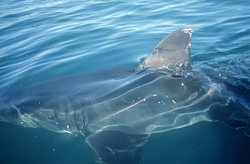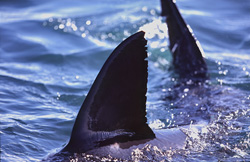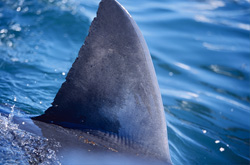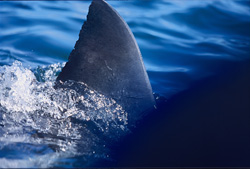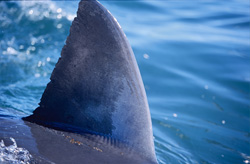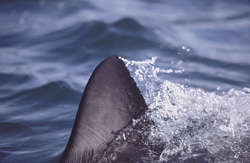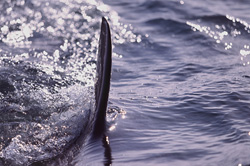Explore the Majestic Dorsal Fin of the Great White Shark – A Symbol of Strength and Elegance in the World Oceans
The dorsal fin of the Great White Shark (Carcharodon carcharias) is a distinctive identifying feature of this impressive predatory fish. Found near the seal colonies of Seal Island in False Bay, as well as close to Dyer Island and Geyser Rock, these fins not only symbolize the strength and presence of the shark but also play a crucial role in its mobility and aerodynamics. Biomechanical studies have demonstrated that the vortices created by the unique shape of the dorsal fin enhance the efficiency of the shark's swimming movements and improve its maneuverability. These adaptations are vital for the survival of the Great White Shark in the often turbulent aquatic habitats. Further research highlights how the dorsal fin contributes to the shark's agility and ecology by optimizing water flow and ensuring stability during vertical movements. The evolution of these characteristics underscores the close relationship between anatomy and environmental adaptation in marine predators. For more in-depth information, please visit the following resources: Biological Profile and IUCN Red List of Threatened Species.

